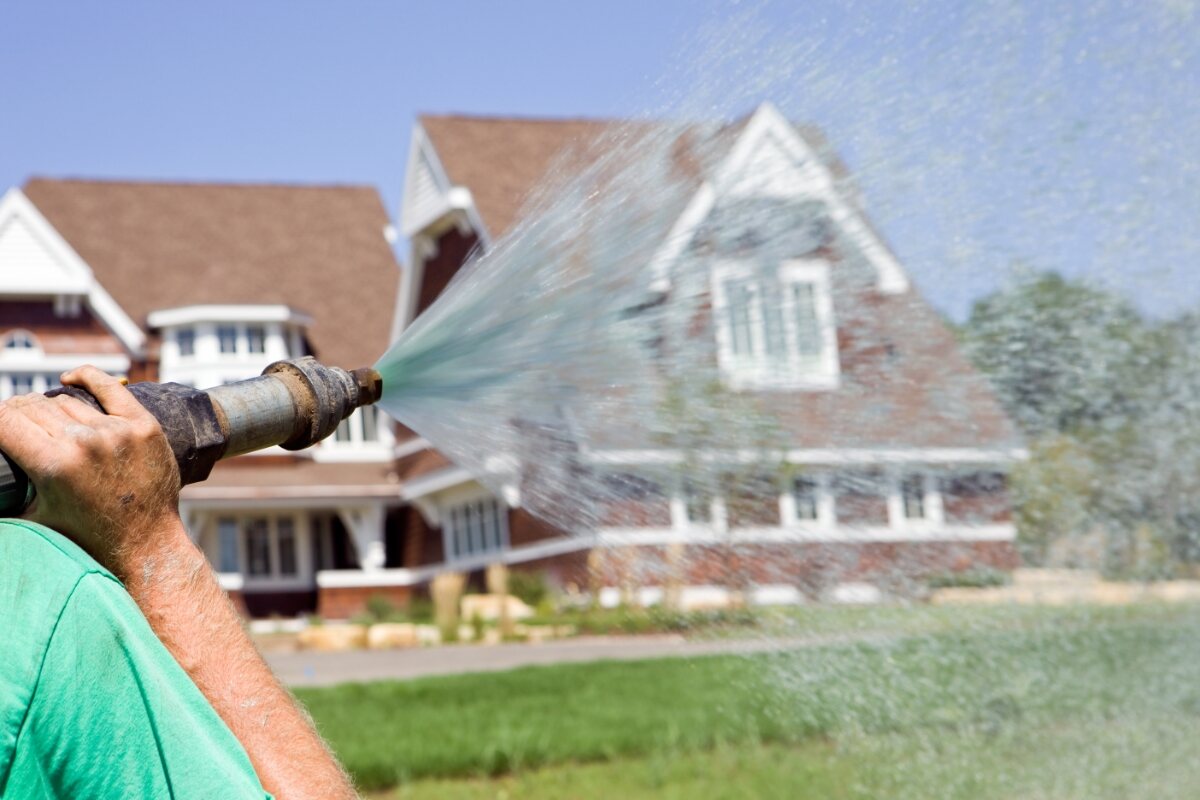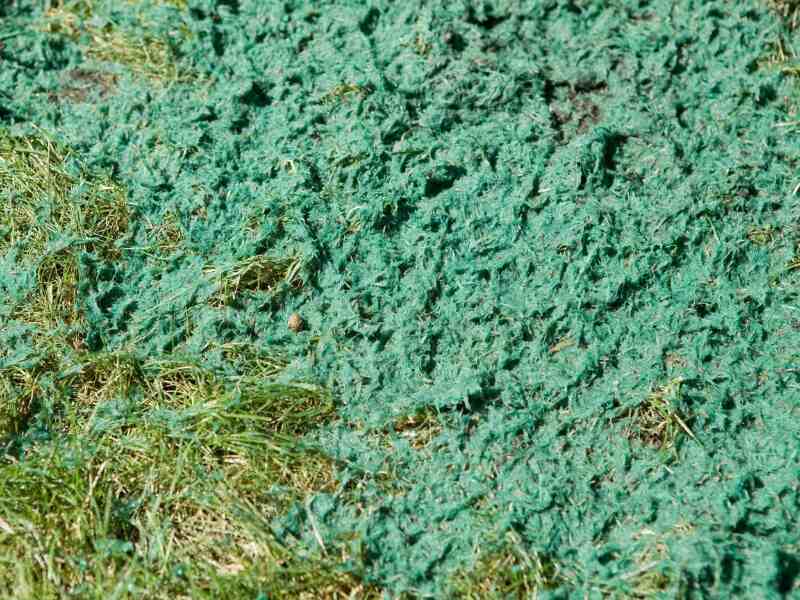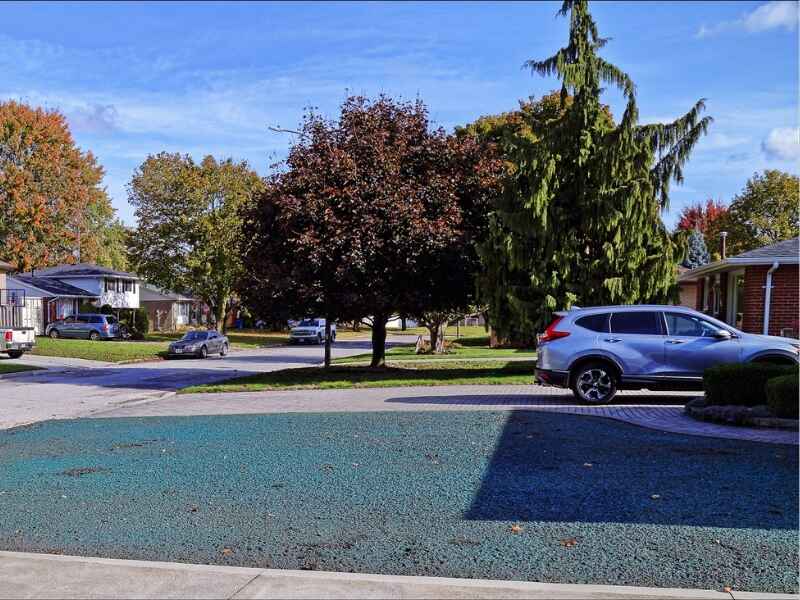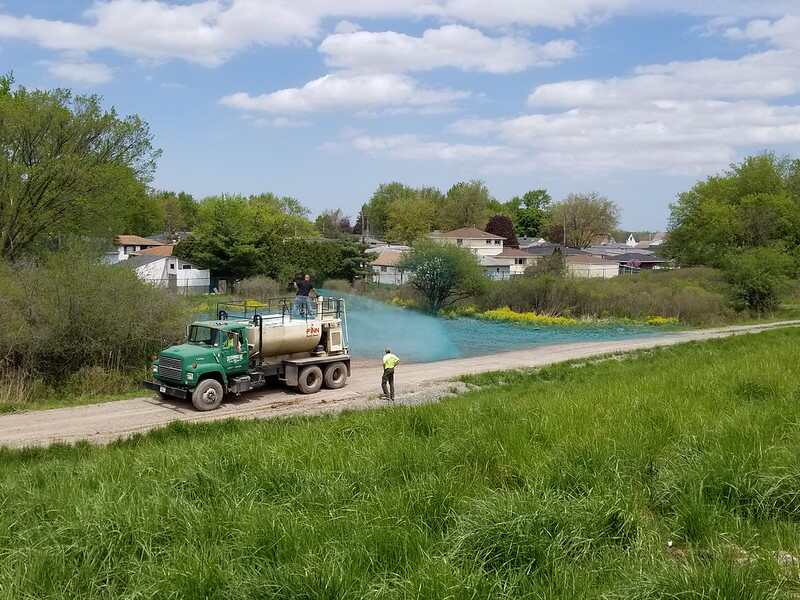
Are you thinking of growing a new lawn? You might hesitate because laying sod is expensive, while traditional seeding takes too long. Let us introduce you to a third option called “hydroseeding”, a method of seeding grass that’s faster than traditional seeding but more affordable than sod.
Also called hydraulic mulch seeding, hydroseeding is simply the process of seeding an area with a slurry – a mixture of mostly seeds, water, and mulch. This article will teach you all about hydroseeding, including its pros and cons, cost, and even how to hydroseed DIY.
What’s in a Hydroseed Slurry?

A hydroseed slurry consists of a mixture of the following ingredients:
- Grass Seeds
- Mulch
- Fertilizer
- Water
- Dye
- Tackifier
The slurry may also contain soil additives, but not all of them do. Whether you should use one with soil additives or not depends on the state of your soil.
Grass Seeds
With hydroseeding, you can pick and choose which grass types you want to plant. You can use a single turf species or use a blend of grasses. For the best results, you should plant grasses that have similar care needs.
You don’t have to stick to just grass seeds either; you can add wildflower and ground cover seeds as well if you want. However, most homeowners hydroseed to get a lush, healthy lawn.
Mulch
The most important function of mulch in a hydroseed slurry is its ability to help grass seeds stick to the soil. It also protects the seeds from strong winds and harsh sunlight. Lastly, it helps fertilize your growing grass as it decomposes.
There are many types of mulch that you can use in your hydroseed slurry:
- Wood fiber mulch is the most expensive but the most effective mulch material. Its heavier weight keeps grass seeds bonded to the soil and protects them more effectively than other types of mulch.
- Paper mulch is the most affordable mulching material, but it’s not recommended for anything outside small-scale hydroseeding. It’s not very sturdy.
- Blended mulch consists of a mix of wood fiber and paper mulch that gives it some of pure wood fiber mulch’s benefits at a lower cost. It’s usually 60% to 70% wood fiber and 30% to 40% paper mulch.
- Bonded fiber matrix mulch is a type of mulch that has a bonding agent that resists water. This type of mulch is typically used when seeding slopes so the slurry doesn’t wash away.
Fertilizer
Fertilizers give your grass the nutrients it needs to grow strong. However, this fertilizer won’t last for the whole growing period, so make sure to fertilize later on.
Water
Water is what makes a hydroseed mixture a slurry. Not only does it make spreading seeds much easier, as it can be sprayed like water, but it also helps the slurry stick because it saturates the mulch with water. This makes it denser and heavier, keeping the seeds locked down where they are.
Water also boosts the rate of seed germination. Keeping your hydroseed moist for the first few weeks of its life is one of the key factors to hydroseeding success.
Dye
Hydroseed should be applied evenly for the best results, and dye helps to accomplish this. While optional, a green-tinted dye can show you where the hydroseed slurry has already been applied.
Tackifier
Tackifiers are another optional component. It’s a binding agent that helps seeds stick better to the soil, which is good for steep slopes and areas that experience heavy runoff and soil erosion. If your lawn is flat, you probably don’t need to add a tackifier.
Pros and Cons of Hydroseeding
What are the benefits of hydroseeding? What are its downsides? Let’s look at the table below to find out.
| Pros | Cons |
| ✓ You can customize what grass seeds to include in your slurry ✓ Looks more uniform than both sod and traditionally seeded lawns ✓ Helps with erosion control ✓ More cost-effective than sod ✓ More convenient than traditional seeding ✓ Faster results than traditional seeding | ✗ Needs a lot of water in its first few weeks ✗ Harder to establish on slopes ✗ DIY hydroseeding is less effective and more complicated than DIY sodding and DIY traditional seeding |
Hydroseeding vs. Sod and Traditional Seeding
How does hydroseeding compare to sod and traditional seeding? Let’s take a look at how hydroseeding stacks against these other methods of planting new grass.
Hydroseeding vs. Sod
Sod’s main advantage over hydroseeding is how fast you can get a beautiful lawn because it’s already fully grown. It can also be walked on in a shorter amount of time than a hydroseeded lawn. However, sod is less hardy, more expensive, and can look artificial.
Aside from being cheaper than laying down sod, hydroseeding is also more customizable when it comes to what types of grass you can grow. Grass grown from seed is also hardier and more disease-resistant than sod, as it has time to establish a strong root system. Lastly, hydroseeded lawns also tend to look more natural than sod.
However, hydroseeding needs more maintenance — particularly when it comes to watering. It also can’t be walked on for about 5 weeks, as the grass needs time to establish itself.
| Hydroseeding | Sod |
| ✓ Offers more grass options ✓ Cheaper and more cost-effective ✓ Looks more natural ✓ Grass has better disease resistance and is hardier ✗ Needs a lot of water ✗ Can only be done during the grass’s growing season ✗ Can’t be walked on for about 5 weeks or until established | ✓ Fully-grown from the beginning ✓ Can be walked on after a shorter time period ✓ Can be laid down almost any time of the year ✗ Lawn is less hardy ✗ More expensive ✗ Can have seams that give your lawn a more artificial look |
Hydroseeding vs. Traditional Seeding
Compared to hydroseeding, traditional seeding is cheaper while still being as hardy and as customizable. However, that’s the only thing that traditional seeding has over hydroseeding.
Hydroseeded lawns sprout faster and tend to look more uniform than traditionally seeded lawns, which tend to grow patchy. Hydroseeding is also more convenient than traditional seeding. However, it’s more expensive and requires more water.
| Hydroseeding | Traditional Seeding |
| ✓ More convenient ✓ Sprouts faster ✓ Looks more uniform ✗ More expensive ✗ Needs more water | ✓ Cheapest way to grow a lawn ✓ Offers as much customization as hydroseeding ✗ More time-consuming ✗ Takes longer to sprout ✗ Grass growth can be patchy |
When to Hydroseed
Since you’re growing grass from seed, the best time to hydroseed is during the growing season of your selected grass type or types. For warm-season grasses, you should hydroseed in late spring or early summer. Cool-season grasses should be hydroseeded from late summer to early fall.
In general, it’s best to hydroseed in the spring or fall because they have cooler temperatures. Spring has the upper hand because it tends to be rainier in the spring, meaning you can forgo watering your lawn. If you plan to hydroseed during spring, you should wait until there’s no more threat of frost. The latest you can hydroseed your lawn in fall is about 45 days before the predicted date of the first frost.
While hydroseeding is doable in the summer, you’ll have a more difficult time maintaining your lawn. A newly hydroseeded lawn needs a lot of moisture, so you’ll need to water your lawn more frequently in the summer.
How to Hydroseed DIY
Do you think you’re up to the challenge of hydroseeding your own lawn? Here’s a short step-by-step guide on the hydroseeding process.
- Select your seeds.
- Perform a soil test.
- Clear your yard of weeds and debris.
- Mark sprinkler heads.
- Grade soil 2 ½ to 3 inches below your desired grade.
- Add topsoil, compost, and other soil amendments.
- Re-grade soil.
- Prep hydroseeding equipment.
- Spray hydroseed slurry.
You can read our DIY hydroseeding guide for more in-depth information.
How to Maintain Your Hydroseeded Lawn

Hydroseeding your lawn is the first step, but the chances of you getting a lush lawn out of it are slim if you don’t take care of your new lawn. Here are some hydroseed maintenance tips:
Keep Your Lawn Moist
Moisture is key to a newly hydroseeded lawn. You should water your lawn 2 to 3 times a day for the first month or so. After that, you can start watering your lawn less, although it still needs more water than an established lawn.
Keep Your Feet Off the Grass
Minimize foot traffic on your newly hydroseeded lawn until it’s fully established. Better yet, avoid walking on it entirely until it’s fully grown. This can take up to a month, but waiting until it’s been 5 weeks is even better.
Mow Your Lawn
Rev up your lawn mower when you see that your grass has reached about 3 to 4 inches in height. New grass will take about 4 to 6 weeks to get to that point, so mow your lawn then. Make sure to take off no more than ⅓ of your lawn’s total height when you mow it; you might injure it otherwise.
Fertilize Your Lawn
Although the hydroseed slurry contains fertilizer, it’s not enough to last throughout the growing season. So, you should fertilize your lawn 30 days after hydroseeding. Consider a starter fertilizer that’s made specifically for newly-planted grass for the best results.
Professional Hydroseeding Cost

Would you rather have a professional lawn care company hydroseed your lawn for you? On average, you can expect the cost of hydroseeding to range from 8 to 20 cents per square foot. This means that hydroseeding a 5,000-square-foot lawn will cost between $400 to $1,000.
What if you have acres of land? Many hydroseeding companies offer a discount on hydroseeding by the acre.
The cost of hydroseeding is based primarily on the size of the lawn, but it can also be affected by your location and labor costs.
FAQs About Hydroseeding
While you can, it’s not recommended that you do this, as the slurry can kill your existing grass. If you want to fill out a patchy lawn, consider overseeding your lawn instead.
Hydroseeding is most effective when done on bare soil.
You should start using weed control products on your lawn after 3 to 4 months. You can try hand-weeding prior to that.
Water no more than 15 minutes every time you water your hydroseeded lawn.
Call in the Pros for a Lush and Green Lawn
Hydroseeding is a more cost-effective way to start a new lawn than sod and a more efficient way than traditional seeding. The average homeowner can even DIY it if they want to save money, especially if they’re hydroseeding a large area. However, you’re paying with your time and effort instead, and you’ll probably need to rent a hydroseeder, too.
Why not hire a professional lawn care company to do it for you instead? These pros have the tools needed for the job, and they already know how to use them. LawnStarter can connect you with a lawn care pro near you to get your hydroseeding project started, no matter where you are in the U.S.
Main Photo Credit: BanksPhotos / Canva Pro / License